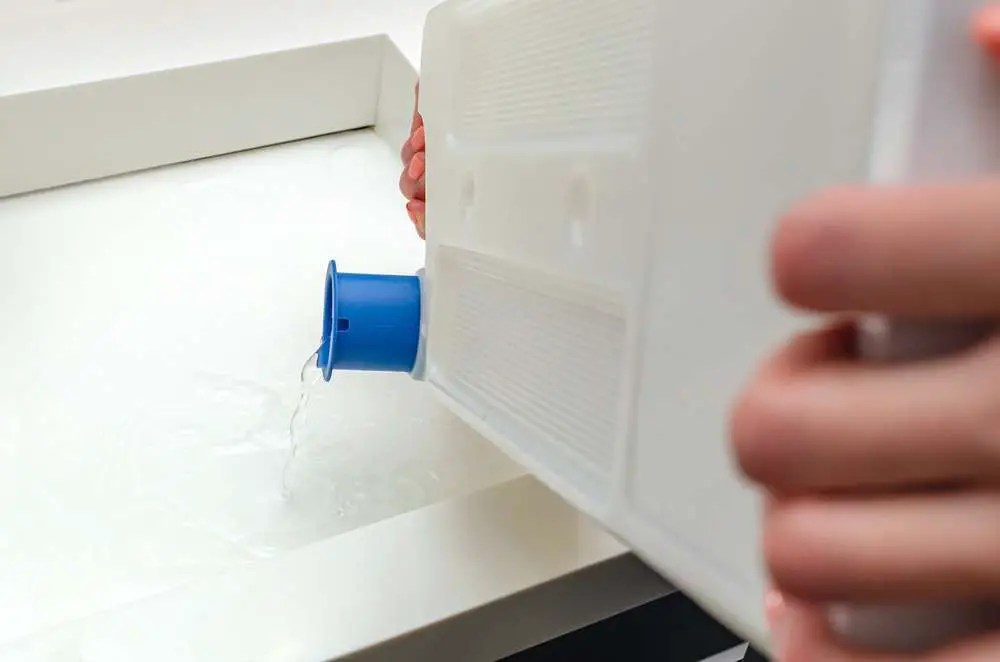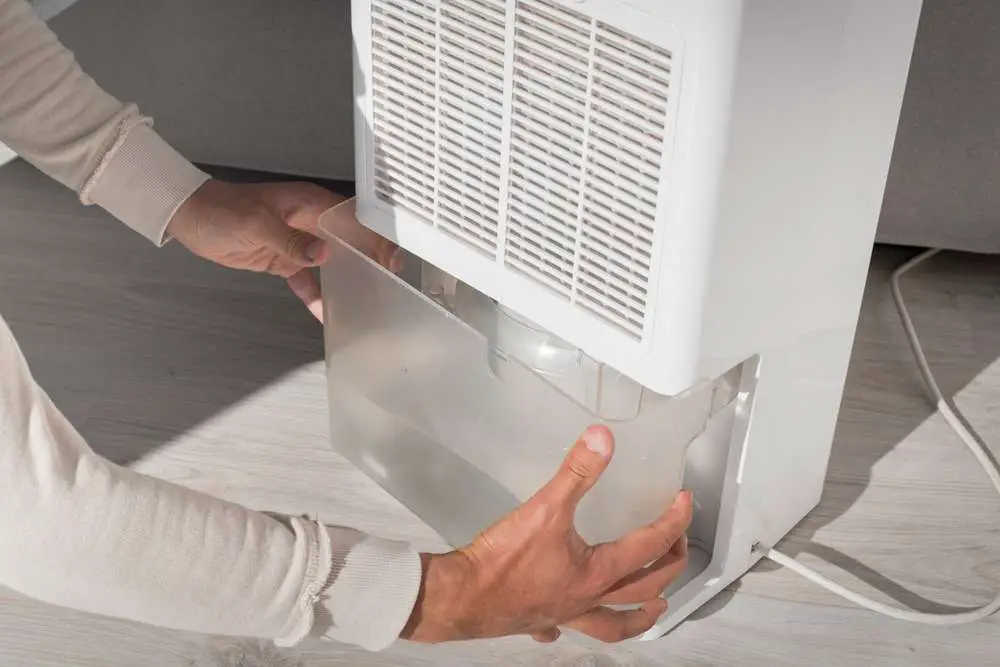- You are here:
- Home »
- Blog »
- Dehumidifiers »
- How Many Gallons of Water Does a Dehumidifier Collect Daily?
How Many Gallons of Water Does a Dehumidifier Collect Daily?

As more homeowners learn the importance of a dehumidifier, they ask certain questions about it. One of the most common questions they ask is, how many gallons of water does a dehumidifier collect?
A mid-sized dehumidifier can collect around 2 to 5 gallons (approximately 7.57 to 19 liters) of water daily. It ultimately depends on the humidity level and the capacity of the device. You need to check on the unit to make sure you empty it once the tank is full so it functions well.
We break down how a dehumidifier works, from where and how much water it collects, and if you can reuse the water collected.
Let’s get into it.
Table of contents
How does a dehumidifier work?
Dehumidifiers are becoming a staple household appliance. Its primary function is to reduce indoor humidity to the recommended level. The device does that by removing moisture from the air.
The fan in the device draws air. The air then travels to the evaporator coils. The low-temperature coils “freeze” the air enough so condensation occurs. During condensation, water is extracted from the air onto the coils. It then trickles down from the coils to the container of the unit. The air is heated and released back into the room.
The main benefits of the device are:
- Moisture is reduced in your home, limiting the potential growth of black mold and mildew.
- It reduces dust and allergens in your home: improving air quality and limiting the chances of allergies.
- It can make your HVAC unit more efficient by removing humidity in your home. The HVAC works twice as hard to cool air in homes with high humidity levels.
Where does the dehumidifier collect water from?
The water a dehumidifier collects is from the air in the atmosphere. All the water it extracts, from the humid air, is collected in the container and sits there until you empty it out.
Air picks up water from the environment through evaporation. The air in areas where there is a large body of water or heavy rainfall and flooding tends to be more humid. Humidity is the percentage of water vapors in the air in relation to its saturation point.
For example, if humidity is at 100% that means that the air is fully saturated. It holds the maximum water vapors it can at the given temperature.
As temperature increases, so does the saturation point of the air. Therefore, you will typically find dehumidifiers collecting more water in the summer than in winter.
How many gallons of water does a dehumidifier collect in a day?
Four factors determine how many gallons of water a dehumidifier collects daily.
These are:
- The relative humidity levels in your home
- The capacity of the dehumidifier
- The size of the dehumidifier
- The area or room the dehumidifier covers
A mid-sized 30-pint (17 liters) device can hold around 4.5 gallons (~17 liters) of water in its tank. You can expect it to collect up to 5 gallons (~19 liters) in a day when humidity is 85%, and you’ve set the unit to reduce it to 45%.
During the day, you will have to empty the tank at least once. This allows the device to continue collecting water. Otherwise, the unit stops working once the tank is full.
Bigger units have more capacity to hold water and cycle air more efficiently and as a result, may collect more water. However, that depends on the humidity level and size of the area the unit covers. Commercial options can collect up to 13 gallons (50 liters) per day.
How often do you have to empty the water tank of the dehumidifier?

The number of times you have to empty the water tank depends on the relative humidity in your home and the water tank capacity of your dehumidifier. But, you must empty the tank as soon as it is full. The last thing you want is to let water stagnant in the tank. A full tank of water turns the device off and increases the chances of mold growth in the unit.
You should empty the device at least once a day on a day with 85% humidity, a 30-pint (17 liters). However, as the humidity decreases, you may have to empty it once every two days or even once a week. Then there are units as small as 2 pints (1.1 liters) emptied 4-5 times on a hot, humid day.
Let’s be honest, emptying the water tank is an added task most people don’t want to do. You can connect a drainage pipe to the unit, which automatically takes the water it collects out, making your life easier.
Can you recycle the water the dehumidifier collects?
The water collected in the dehumidifier is generally safe to use. There are ways to recycle the water collected.
The most common ways to use the recycled water are:
- Water your plants.
- Fill up your car’s battery or radiator.
- Soak cycle when washing your clothes.
- Use it in your steam iron.
- Fill your toilet tank.
We recommend you recycle the water only if you regularly clean your dehumidifier. Otherwise, you risk exposing water to pollutants in the device such as bacteria and dirt.
Final thoughts
You need to empty the humidifier once it is full for the dehumidifier to continuously work and keep humidity levels down. Look at the owners’ manual of the unit so that you are aware of the water holding capacity of the tank and check on it often during hot, humid days.
This will ensure that the device continues to function well and ensures that your home is comfortable for you and your family.
About the Author Belal
Belal Rizvi enjoys writing about home improvement and do-it-yourself projects. He is an avid learner of the mold removal and dehumidifiers industry and provides insightful information about it to the readers.
